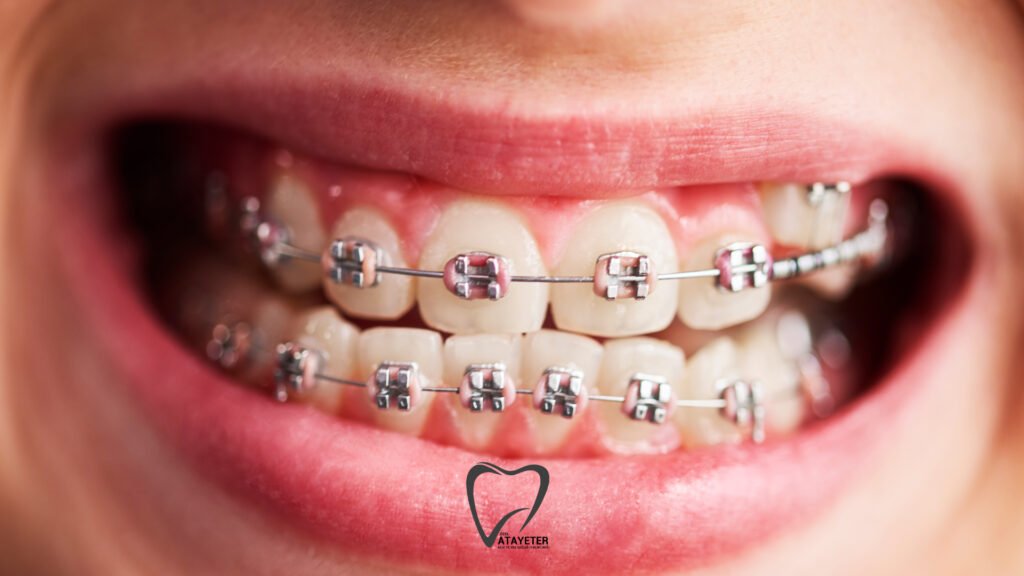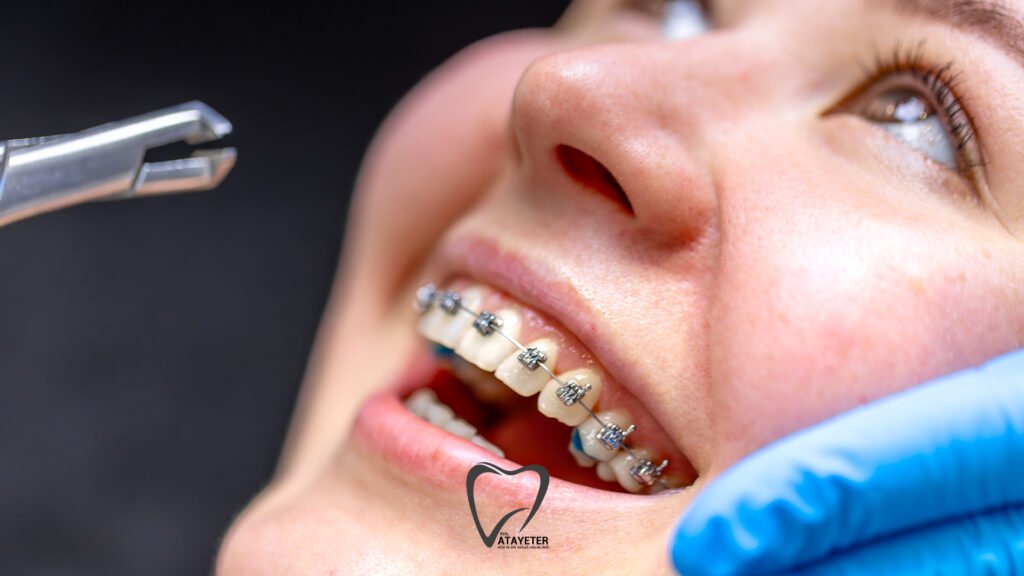A beautiful smile is not only aesthetically pleasing but also a sign of a healthy oral structure. Well-aligned teeth and a correct bite facilitate chewing and protect the health of teeth and gums. Unfortunately, due to genetic factors, early loss of primary teeth, thumb-sucking habits, or improper swallowing, misalignment, spacing, or jaw irregularities can occur. Orthodontic treatment addresses all these issues, providing a healthy oral structure that is both aesthetically and functionally sound.
The treatments we perform in our clinic aim not only to straighten teeth but also to help our patients smile with confidence.
What is Orthodontics?
It is one of the most well-known and popular fields of dentistry. It primarily deals with the diagnosis, treatment, and prevention of irregularities in the alignment of teeth and jaws. Although commonly known as “braces,” orthodontics actually encompasses much more. Today, metal brackets are not the only devices used; clear aligners, porcelain braces, and many other modern solutions that are aesthetically subtle are also available.
One of the most important goals is to align teeth into their ideal position. Crooked, spaced, or misaligned teeth can cause problems not only aesthetically but also oral health. Misaligned bites or jaw misalignments can lead to chewing difficulties, joint discomfort, or accelerated tooth wear over time. Orthodontics corrects all these problems, creating a healthy and balanced oral structure.
One of the most significant benefits of this treatment is achieving a confident smile. Well-aligned teeth and a harmonious jaw structure create an aesthetically pleasing appearance. This positively impacts both a person’s social life and self-confidence.

When is Orthodontic Treatment Applied?
This treatment is used to correct various problems in the teeth and jaw structure. The primary conditions requiring this treatment include crooked or overlapping teeth, excessive spacing between teeth, misalignments between the upper and lower jaws (such as open bites, crossbites, deep bites), narrow jaws, and complaints of jaw joint noises or pain.In addition, orthodontic intervention may be necessary because gaps resulting from premature loss of primary teeth can negatively impact tooth alignment in the future.
Orthodontic Treatment Methods
Today, a wide range of options are available. The method to be used is determined by considering the patient’s age, dental structure, jaw condition, and aesthetic expectations. This allows us to create the most appropriate personalized treatment plan.
Metal Braces
Metal braces are the first method that comes to mind when talking about orthodontics. They have been preferred for many years due to their durability and effective results. Teeth are gradually brought into the correct position with the help of small metal pieces bonded to the teeth and wires connecting them.
Porcelain (Clear) Braces
They serve the same function as metal braces, but are tooth-colored, providing a more aesthetic appearance. Adults, in particular, prefer this method because they prioritize visual appeal during the treatment process.
Lingual Orthodontics
Here, brackets and wires are placed on the back surface of the teeth. This makes the treatment unnoticeable from the outside. It’s an ideal solution for people who prioritize aesthetics but don’t want to give up the use of braces.
Clear Aligners
One of the most popular methods in recent years is clear aligners. Custom-made to your teeth, these aligners gradually straighten teeth. Their most important advantage is that they are removable and virtually invisible. It is a very comfortable treatment option, both in terms of aesthetics and ease of use.
Functional Appliances
These appliances are used to guide jaw development, especially in children. Jaw narrowness or malocclusion can be corrected early with this method. This can prevent the need for more extensive treatments later in life.

What is the ideal age for orthodontic treatment?
There is no specific age limit for orthodontic treatment. An orthodontic examination is recommended for children starting at age 7-8. Early diagnosis can guide jaw development and prevent more difficult treatments in the future.
Orthodontic treatment can also be easily applied to adults. Thanks to clear aligners and aesthetic braces, individuals of all ages can now receive treatment.
How Long Does Treatment Take?
The duration of treatment varies depending on the type and severity of the disorder. While simple misalignments can be corrected within 6-12 months, more advanced cases can take 2-3 years. Regular checkups and patient compliance with treatment ensure a shorter and healthier process.
Atayeter Oral and Dental Health Polyclinic








